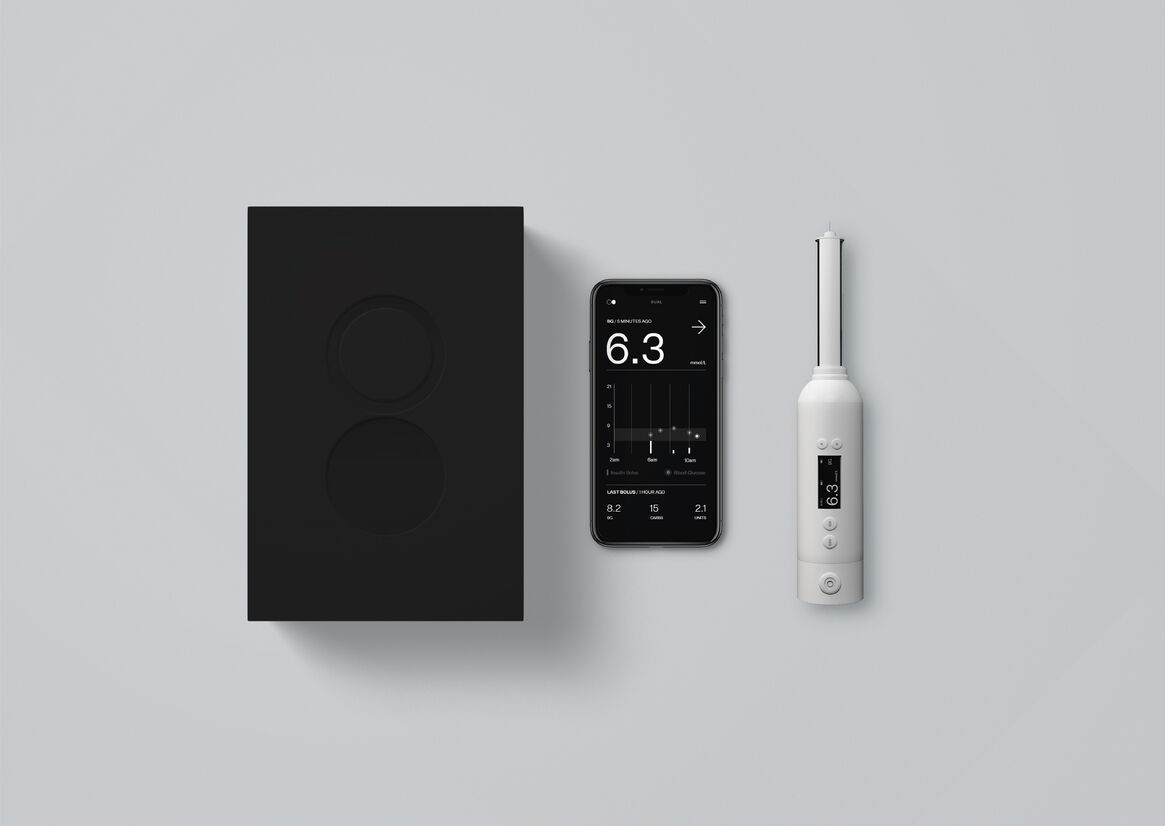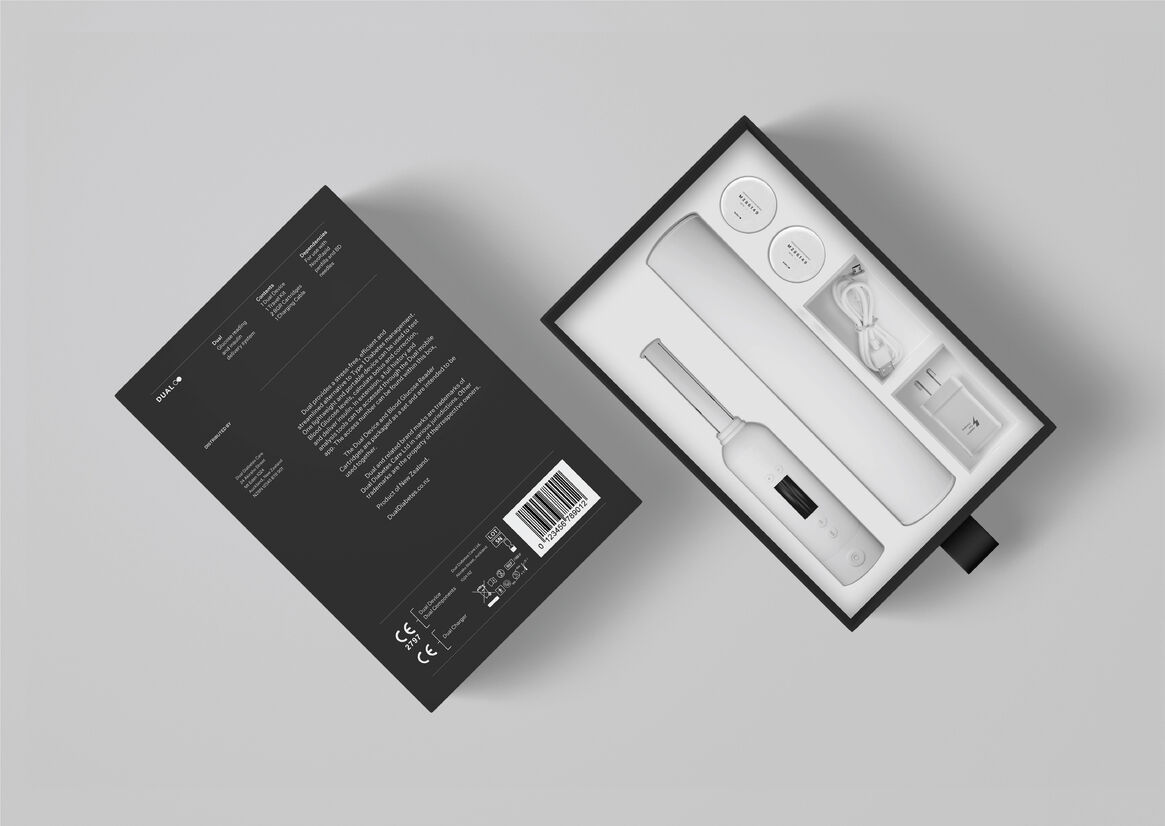Product
Rose Norgrove 3 DUAL
-
Tauira / Student
Rose Norgrove -
Kaiako / Lecturers
Tammie Leong, Don Chooi, Pritika Y. Lal, Jim Murray
-
School
Media Design School










Description:
Type 1 Diabetes affects 26,000 New Zealanders. Every person affected by this disease requires a blood sugar reader and an insulin delivery device. Unfortunately, there is currently no affordable, all-in-one device which does not impose constant attachment to the user's body.
Type 1 Diabetes is considerably different to the more common Type 2 Diabetes; it is not caused by the patient’s lifestyle or diet, it just happens. Unlike T2 Diabetics, all T1 Diabetics require an insulin giving device, as their bodies do not produce insulin on their own. In addition, all Diabetics require a glucose monitoring system to inform them of their blood sugar level. Unfortunately, these two needs have not been targeted concurrently, forcing T1 Diabetics to carry multiple devices with various additional pieces of equipment.
This is likely a consequence of Diabetic equipment being designed with T2 Diabetics prioritised, as most T2 Diabetics do not require an insulin giving device. Furthermore, many T2 Diabetics only need to test their blood sugar once every couple of days, which may explain the unhandy and bulky nature of current blood glucose testers. T1 Diabetics, on the other hand, need to test frequently - the more the better - so these devices are a burden, with many difficult to use on-the-go without a clean surface to set up on. Testing less often as a result of inconvenient equipment is a well documented problem, and it significantly worsens Diabetes management which can lead to serious health complications.
In extension, many new devices at the forefront of T1 Diabetes management require constant attachment to the user’s body, which is expensive and precarious, as these devices can easily be knocked off, rendering them temporarily useless.
Dual is a simplistic and compact device, which provides users with blood glucose testing and insulin delivery. The device utilizes cutting-edge technology to provide automatic lancing and blood collection in one simple motion. After the reading has been analysed, the user can enter their carbohydrate intake and deliver insulin through injection. The dosage (bolus) is calculated automatically based on the user’s insulin sensitivity, which can be set via the app, preventing human errors as these calculations are complex and change depending on the time of day. All of the data stored on the device will be sent via Bluetooth to a mobile app, allowing the user to review their management history and daily patterns. This allows the user to capitalise on smart analysis and recordings, without adding another device to their bag. Furthermore, the travel case allows users to travel for extended periods of time without loose equipment and unneeded packaging, again simplifying the user experience.
As a Type 1 Diabetic myself, I have designed Dual to resolve all of the pain points I have encountered over the last 12 years. Dual has been designed to fit into everyday life, providing users with the freedoms afforded by detached devices, and the benefits of automation. Dual allows diabetics to live with less equipment, less complications, and more control.
Judge's comments:
Comprehensively designed system for diabetics with outstanding attention to detail across product, packaging and associated app. Its first-class, clear and simple design execution is outstanding and equal to the best professional standards.